Ferranti was a significant UK electrical engineering and equipment firm, known for defence electronics, power grids and the world’s first commercially available computer, the Ferranti Mark 1, made and sold to Manchester University in 1951.
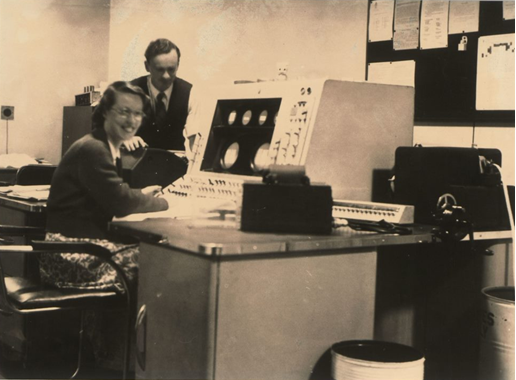
Ferranti’s Computer Group formed in 1949 and used researchers at the University of Manchester to develop the computers it sold. On Monday 21 June 1948, the first stored program computer in the world had run its first job. It was an experimental machine built in Manchester by a team lead by Sir FC Williams and Tom Kilburn: its purpose was to test the new Williams tubes developed for random-access storage to replace serial-access delay lines. Nicknamed the ‘Baby’ it had a 32×32 bit word with keyboard input and it ran a 52 minute factoring program.
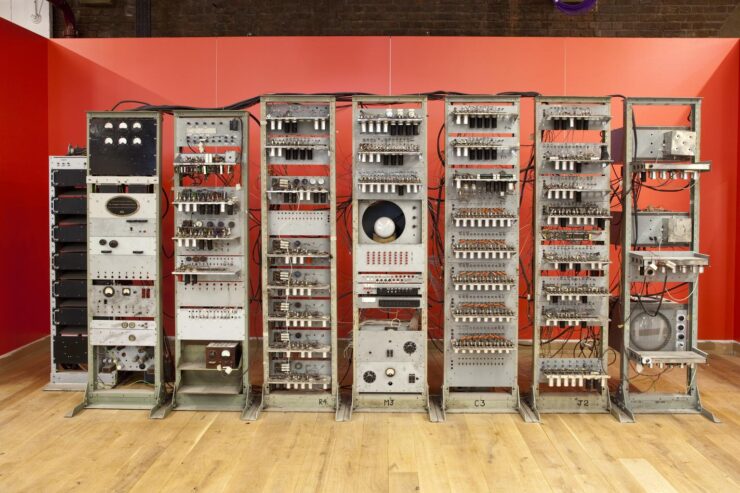
Science Museum Group Collection (c) The Board of Trustees of the Science Museum (CC BY-NC-SA 4.0)
The Manchester team went on from the Baby to build the Manchester Mark I, which was used for guided weapons development by Ferranti. The Government Scientist contacted Ferranti to make copies, with a 5 year grant – the first computer made on spec and sold. The team went on to develop the Manchester Mark II in 1952, which Ferranti used to make the Mercury range of computers.

AIT interviewee Bob Harvey, worked with Conway Berners-Lee, who developed the Ferranti Mark 1 another first as the world’s first commercially available computer. Bob said this about the workplace culture at Ferranti :
Conway Berners-Lee was very much guiding me and others in how to do programming…my memory of it, and it is a long time ago now, is very much encouraging me to do things, not rules and regulations that you would find in traditional business, but very much, ‘this is the task we’ve got to do’, and encouraging one to solve it.
Soon it became apparent that Manchester was not the right place to reach influential customers commercially, and in 1953 Ferranti opened The London Computer Centre at 21 Portland Place. Conway describes Portland Place in this interview with the British Library and talks of how the Chairman was keen for it to not appear too cerebral, but admits that it had the atmosphere of a university, where people could visit and try out new computers and programs.

During the 1960s, Pegasus 1 and 2 and Perseus, then Orion 1 and 2 models were produced for commercial use, the Mercury range based on the Manchester Mark II for scientific use. This latter model was the first computer purchased by the Met Office, after they had rented their first LEO and Mark I computers on a bureau basis.
From 1958-1962 the Manchester research team worked on the MUSE project, a computer with a micro-second engine. This led to the team designing the ATLAS computer with Ferranti in 1962. The model had a pioneering virtual storage and paging system. Its operating system, designed by David Haworth, is thought to be the first real operating system.
At this point in Ferranti’s history, the company began to run into problems. In 1949 Ferranti had been brought in by the government to work on radar and guidance systems for missiles. This led to the development of a ramjet powered surface-to-air missile called the Bristol Bloodhound. However, government auditors discovered that Ferranti had made far more profits from the Bloodhound I contract than expected, and the Bloodhound Inquiry was set up in 1962. The result was Ferranti had to pay the government back £4.25 million.
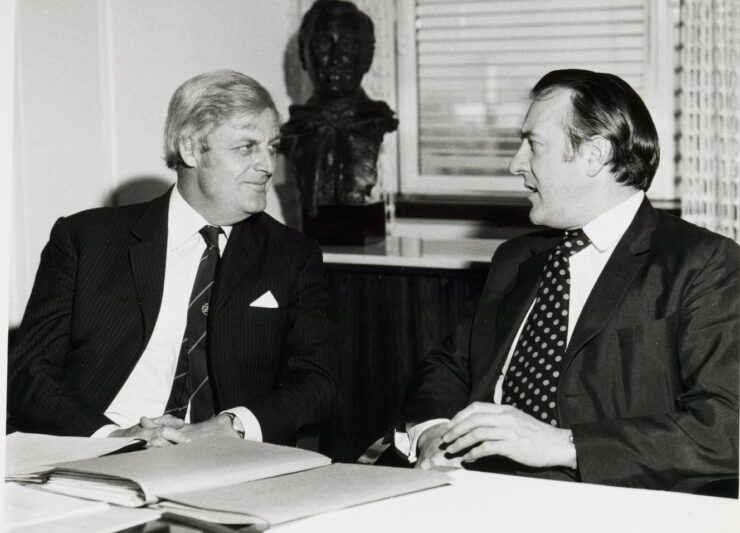
With the Inquiry running in the background, the decision was made in 1963 to sell Ferranti’s Computer Department to International Computers and Tabulators (ICT), itself a result of the merger of British Tabulating Machine Co (BTM) and Powers-Samas Accounting Machines in 1959. Eventually this branch of the company was to become International Computers Limited (ICL), after a merger with English Electric computers and others.
Now the commercial arm was gone, throughout the 1970s Ferranti concentrated on producing industrial computers. The digital systems division in Bracknell was developing a range of mainframe computers for naval applications: Hermes, Poseidon, and the F1600 series. AIT interviewee John Steele joined Ferranti in 1963 and was there whilst the merger with ICT was happening. His first job was designing logic for Argus 400. The Argus series was designed for process control applications, for example in the Mark II telescope at Jodrell Bank and the Bloodhound missile.
They then told me about the Argus 100 computer that they were using for processing control. That was a germanium transistor computer based on the Argus computer which was the launch computer for the Bloodhound Missile. Ferranti were interested in making integrated circuit computers. They had a paper design for the integrated circuits and needed someone to convert their Argus100 logic design to use the new integrated circuits.
So, I was given the freedom to actually do the logic design, never having done logic design at all, to design the Argus 400…I discovered that the integrated circuits didn’t match the functionality of the germanium transistor circuits, in particular the bistables, we call them JK Flip Flops, had very different characteristics. So, I effectively had to redesign about two-thirds of the computer, and that was my first job!
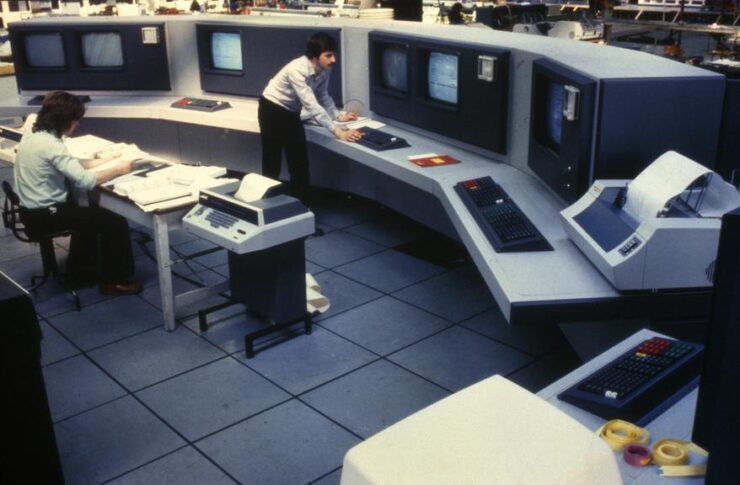
However, in 1967 the Distribution Transformers department was closed down, having run into financial problems. As a result, during 1974-1975 Ferranti ran into a cashflow crisis and lost the support of its banks. Industry Minister Tony Benn pushed through a government bail out. The government now had a controlling interest, managed by the National Enterprise Board. Derek Alun Jones was brought in as Managing Director, and in 1982 Ferranti returned fully to the private sector. The Ferranti family were now minority shareholders in the company and Sebastian left as chairman for Ferranti’s rival, GEC, replaced by his brother Basil.

The 1980s saw Ferranti enter the personal computers market, with some of their computer series comparable to IBM’s. In 1984 it was restructured into 5 operating divisions and then in 1987 Ferranti plc merged with the American based company The International Signal & Control Group (ISC), the new company becoming Ferranti International PLC. Sebastian Ferranti opposed this deal as shareholder, which did turn out to be a mistake. ISC was fraudulent, with non-existent contracts and incorrect valuations, costing Ferranti around £215 million.
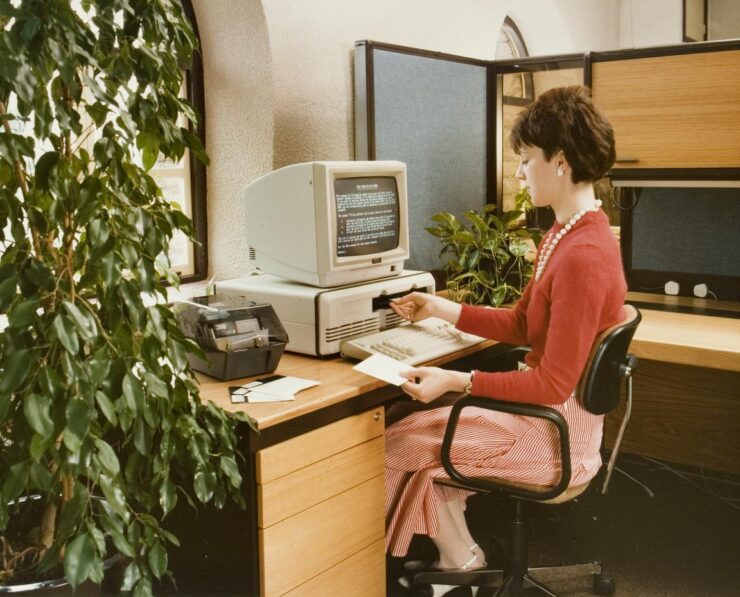
Dr Michael Taylor had just started at Ferranti at the time of the deal, and had this to say:
I had a phone call from my wife, she said, ‘Oh, it’s on the news that Ferranti’s got a bit of a problem, something about a $20 million hole in their accounts.’ So, I phoned the chairman and I said, ‘My wife has just told me that we’ve got a £20 million deficit’. He said, ‘We’re a billion pound company, what’s twenty, or £200 million.’ I said, ‘Well hang on, she told me it was twenty million on the news only a couple of hours ago.’ Suddenly on the phone it was now 200 million, and I’m thinking this is getting serious. Anyway, it was a meltdown. This merger coupled with the fraudulence of ISC, meant the end of the great company Ferranti. I managed to survive a year.
This was to have its impact on the Computing Division. The Computer Maintenance Systems business based in Wythenshawe was sold off to ServiceTec in 1989 and part of the sonar business to Thomson-CSF in 1990. Ferranti went into receivership in 1994, and the Computer Division was bought out by a Thomason-CSF subsidiary, SYSECA.
Further information
- Search for more AIT interviews from people who worked at Ferranti by clicking here
- The Science Museum Group holds archive collections from people who worked at Ferranti as well as manuals and photographs and the Ferranti Archive. Search the catalogue at the Science Museum by clicking here.
- Discover the Atlas Computer Laboratory 1963-1975, where the Atlas computer was used for research, on the Chilton Computing website.